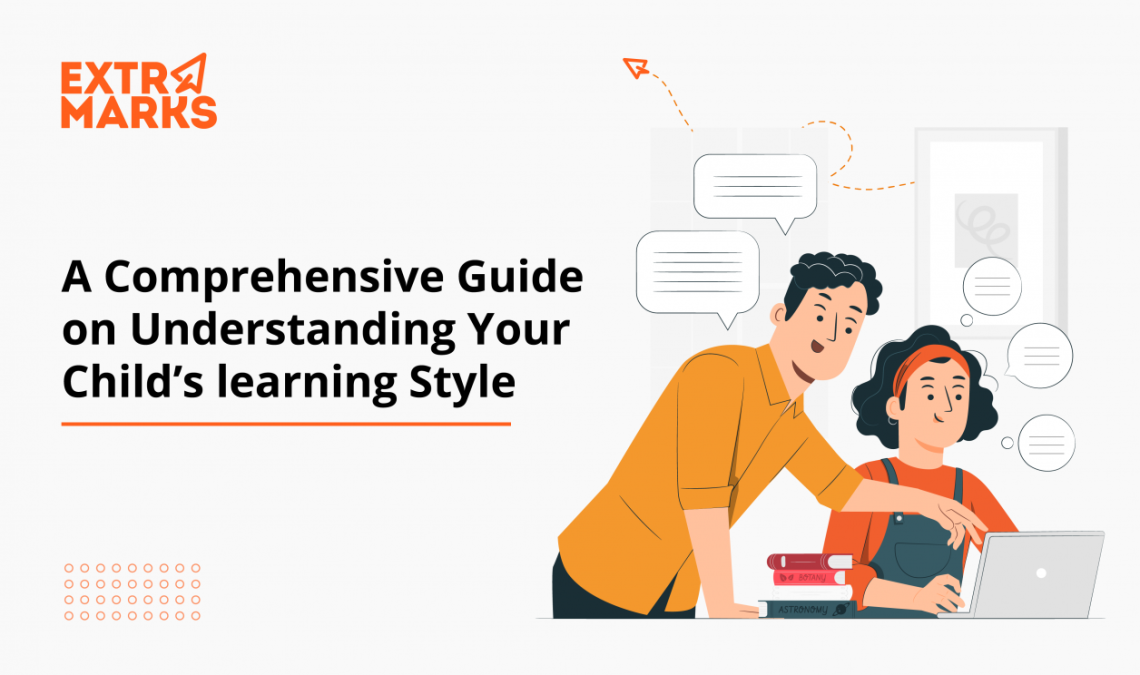A Comprehensive Guide on Understanding Your Child’s learning Style

Have you noticed your child struggling with certain kinds of information while feeling completely at ease with others? You may be surprised to know that the way in which information is presented can also affect the way in which it is absorbed irrespective of the type of information itself.
Every child has a preferred style of learning – some learn better by listening, some by doing and so on. Understanding what your child’s unique learning style is can help you chart out a plan that helps them learn better and to their optimal capacity.
While there can be several types of learning styles, there are eight major ones and children usually fall into one or more of the following categories:

1. Visual Learners
A visual learner learns better through visual stimulation. For example, a visual learner will grasp better by watching videos and actually seeing how things are done or made, rather than reading about them.
If your child has a well-developed imagination and is good at arts and crafts or shows signs of any artistic talents, then they may be a visual learner.
To know more about visual learners, how to identify if your child is one and how you can help them leverage visual aids, read this blog.
2. Auditory Learners
Auditory learners prefer learning by listening. Listening to lectures in class or reading out loud to themselves can help them learn better. If your child is inclined to music or audio books, then they might be an auditory learner.
Your child may remember things once heard and store information by the way it sounds. Auditory learners can process audio information better than written or visual information.
To know more about auditory learners, how to identify if your child is one and how you can help them leverage auditory aids, read this blog.
3. Physical/Kinesthetic Learners
Kinesthetic learners learn best by doing things. These kinds of learners prefer creating things and performing experiments.
If your child is highly active and keeps moving about, here and there then they may be a kinesthetic learner.
To know more about kinesthetic learners, how to identify if your child is one and how you can help them leverage their energy and curiosity, read this blog.
4. Social/Interpersonal Learners
Social learners enjoy spending time with others and learning from them. These kinds of learners thrive in group discussions and projects. They enjoy being around people and are social butterflies.
Children who fall under this type of learning style were particularly affected during the COVID-19 pandemic. You can involve your child in group classes or social activities where they can spend time with other kids and learn from their peers.
To know more about interpersonal learners, how to identify if your child is one and how you can help them use their social skills to learn better, read this blog.
5. Solo/Intrapersonal Learners
Solo learners enjoy solitude and prefer individual learning opportunities. If your child enjoys learning things on their own through various methods in their own quiet space, then they may be a solo learner.
They focus on individual learning and problem solving and enjoy keeping personal journals. While it is a good thing if your child studies by themselves you must also make sure that they take part in group activities to foster their interpersonal skills.
To know more about intrapersonal learners, how to identify if your child is one and how you can help them use their individuality to their advantage, read this blog.
6. Analytical Learners
Analytical learners enjoy challenges where logic is involved. They process information best when presented in the form of puzzles, equations, order or facts. If your child enjoys logical reasoning and problem solving in any form, then they might be an analytical learner.
Such learners look for patterns and trends and tend to dissect problems to arrive at logical solutions.
To know more about analytical learners, how to identify if your child is one and how you can help them use their deductive skills to learn better, read this blog.
7. Naturalistic Learners
Naturalistic learners fall under a unique learning style as they enjoy their time outdoors. They are similar to kinesthetic learners in terms of learning by doing, but they like to do things outdoors and learn from nature. If your child responds best to a more peaceful, natural type of learning environment, then they may be a naturalistic learner.
To know more about naturalistic learners, how to identify if your child is one and how you can help them use their love for nature to learn better, read this blog.
8. Verbal Learners
Verbal learners enjoy using language skills, rhymes and word play. They learn best by writing things down, reading or talking through study materials.
To know more about verbal learners, how to identify if your child is one and how you can help them use their love for language to learn better, read this blog.
Understanding your child’s learning style/s and enabling them to leverage it to understand, grasp and retain better is the best way you can help them achieve academic success.
Spend time with your child, observe their learning style and help them fall in love with academics!
Last Updated on May 29, 2024









